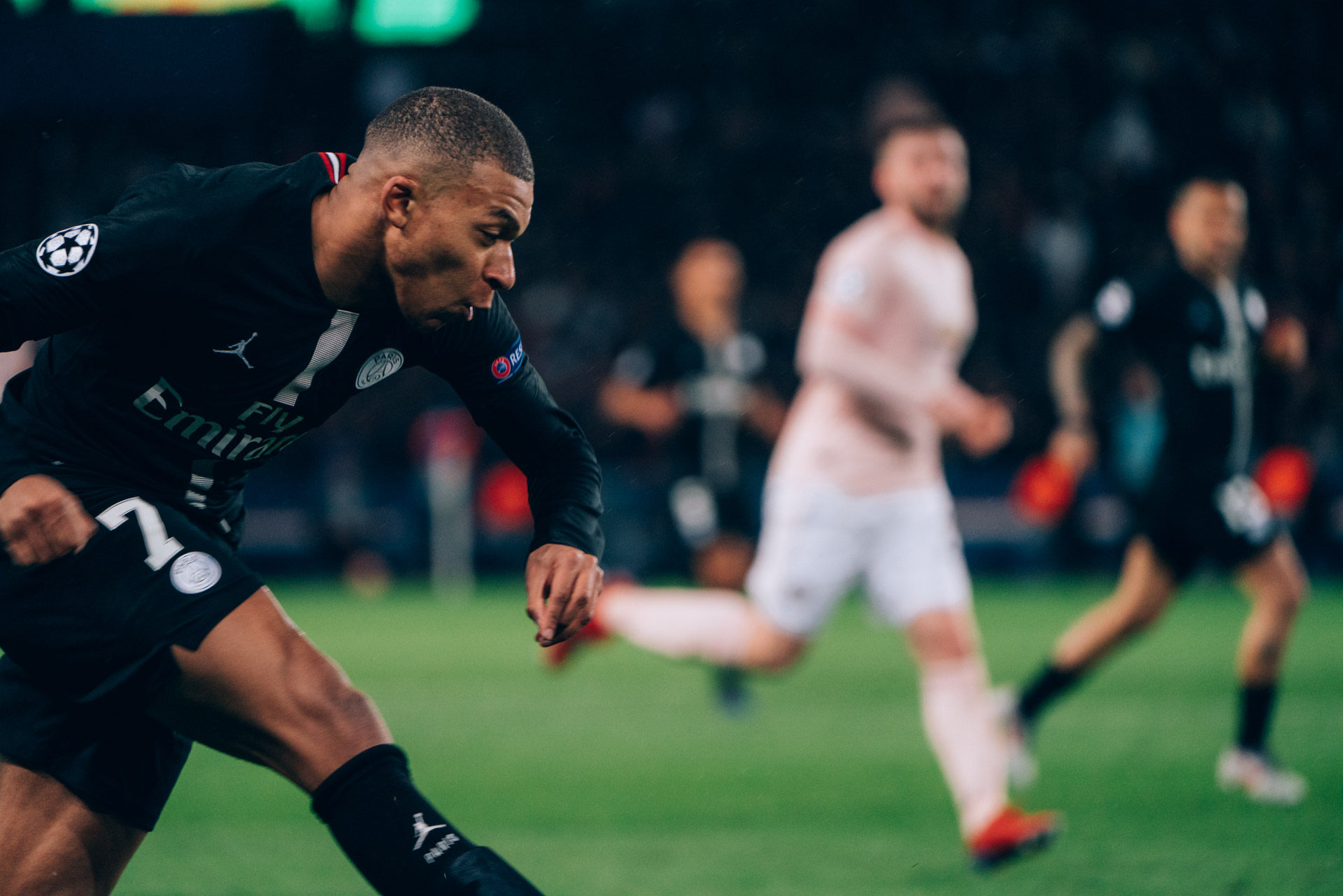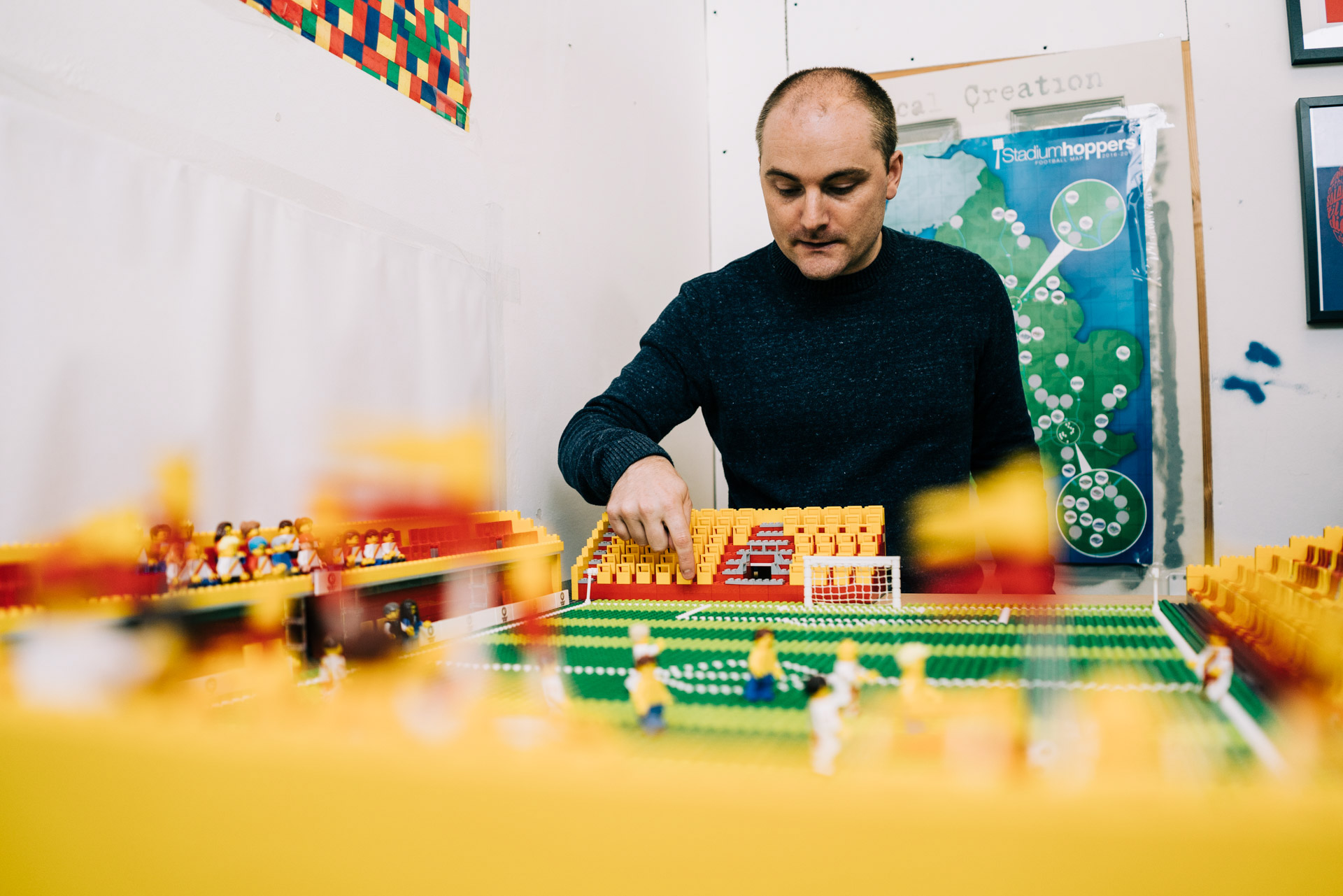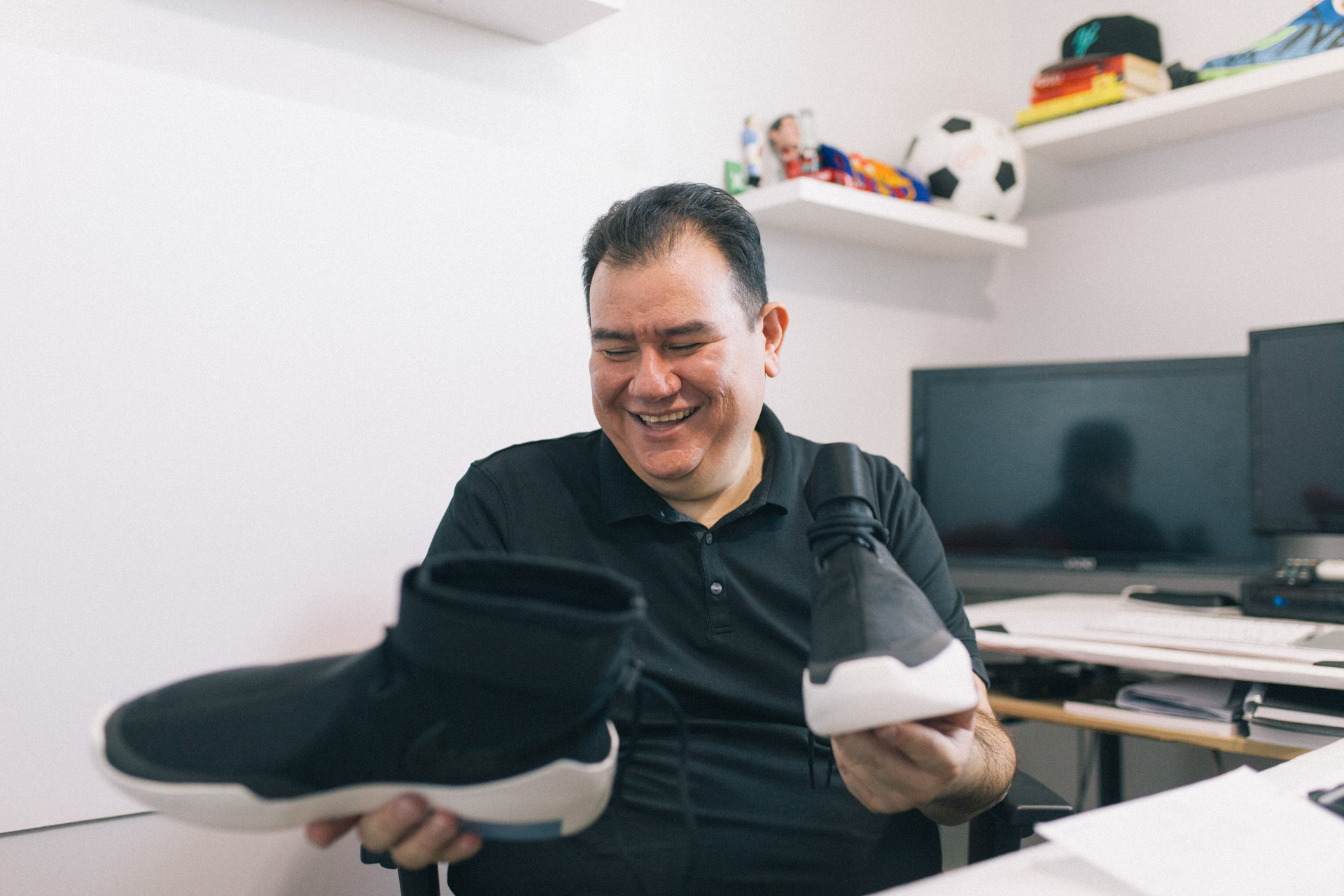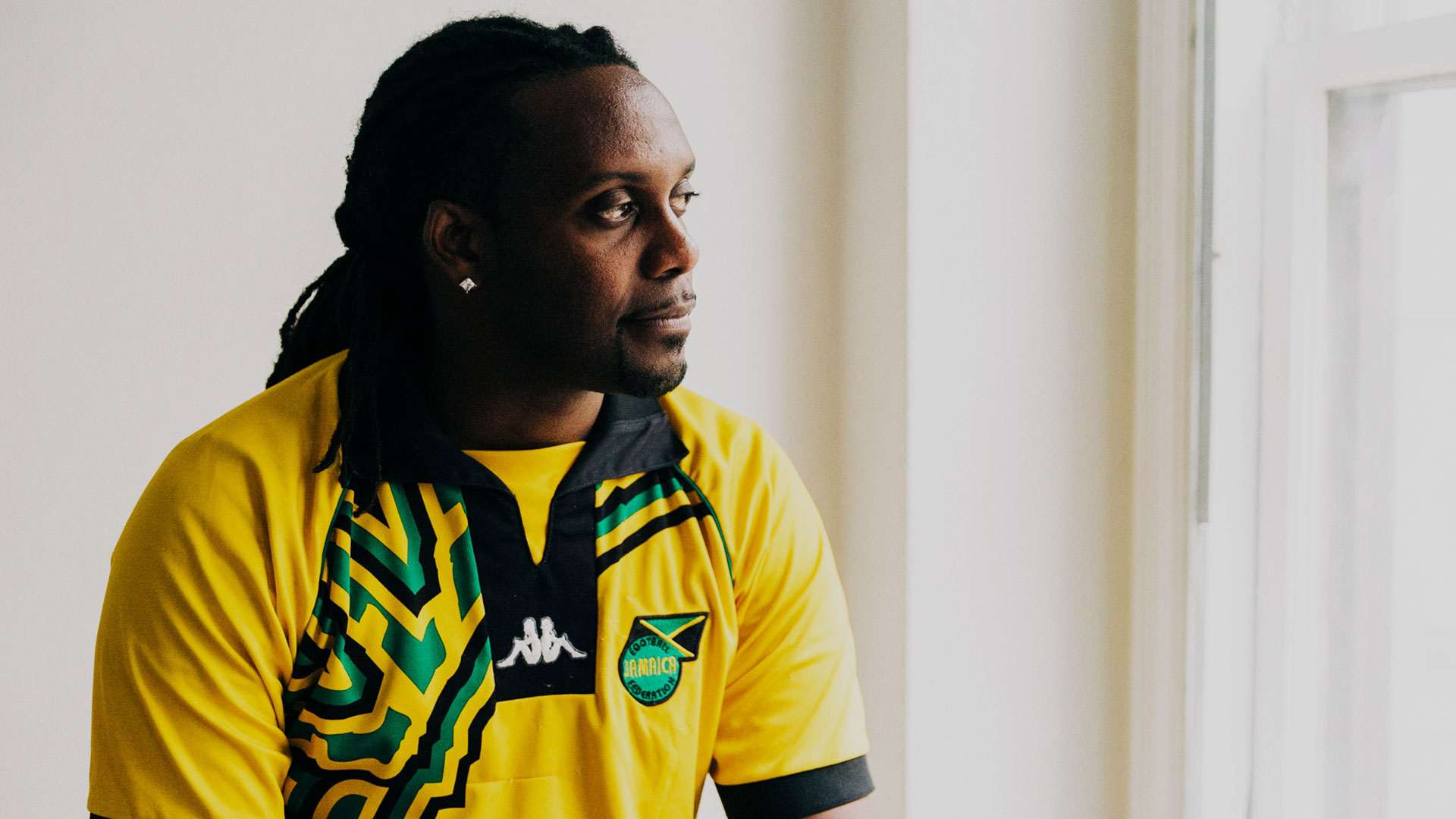LE BALLON: A DIFFERENT LEAGUE W/ JACK WHELAN

There’s no denying Jack Whelan’s love for football. As the owner and founder of Le Ballon, a football “maison de tout” based out of Paris, Whelan does everything from consulting to creating, and even sometimes playing, but that’s not where his football story in the fashion capital begins.
Originally hailing from near Birmingham, England, Jack has had spells in Switzerland and Canada before finally settling in France. His first foray into creating a mark in the culture he attributes to more of a little bit of luck than judgment. He and his brother were given an opportunity to take over a shut-down bar and naturally, their aim was to convert it to a football bar, except one that “did things a little bit differently.” At the time, around the 2014 World Cup, Parisians did not experience football matches in bars and pubs like American and English people do, so the Whelans wanted to bring that type of an environment to them.

“We didn’t just want to have a pub where we put in a couple of screens and hang a scarf from the wall and say, ’yeah, we’re a football bar now,’ so we looked at all the things that we liked that surrounded football.
“We wanted to create a place where everyone could come and everyone could feel welcomed so people that were massive football fans would appreciate it for the little nods to football history and the nostalgia elements that would appeal to them, but also to the more casual fan (it was the World Cup after all), where they wouldn’t feel intimidated by a bunch of swear-y, beer-y, bold blokes in the pub.”

Where you might’ve assumed a signed soccer ball sitting in a display case instead hung a picture of Rod Stewart in a leotard kicking a ball around. Or as opposed to a vintage kit framed up, you’d see a shot of Andy Warhol photographing Pelé. “It was a bit tongue-and-cheek, a bit English, a bit self-effacing, and it ended up working quite well.”
The success of their bar led to interests from brands who liked Jack’s take on the game and wanted him to get involved further. For Jack there was still plenty of room to make football cooler and more interesting. Football culture had an image problem and this was an opportunity for him to change that.

“If you wore a football shirt in the street, you were at best, uncool, at worst, a hooligan. And that was something we didn’t really like and we didn’t think was true. We disagreed that wearing a football shirt couldn’t be cool.”
“In France, they have this notion of [a footballer being] the ‘beauf’ and that’s someone who doesn’t have any sensibilities for style or for fashion, or for what might be cool or what might not be cool. And we just completely disagreed with it. Footballers influence so many things throughout history. Be it in fashion, be it in art; be it in music, whatever it might be; football has influenced it. It’s a global game. It’s the working man’s game. It ticks all the boxes for everyone no matter how rich or poor, no matter what kind of upbringing you’ve had, everyone can get in with it.”
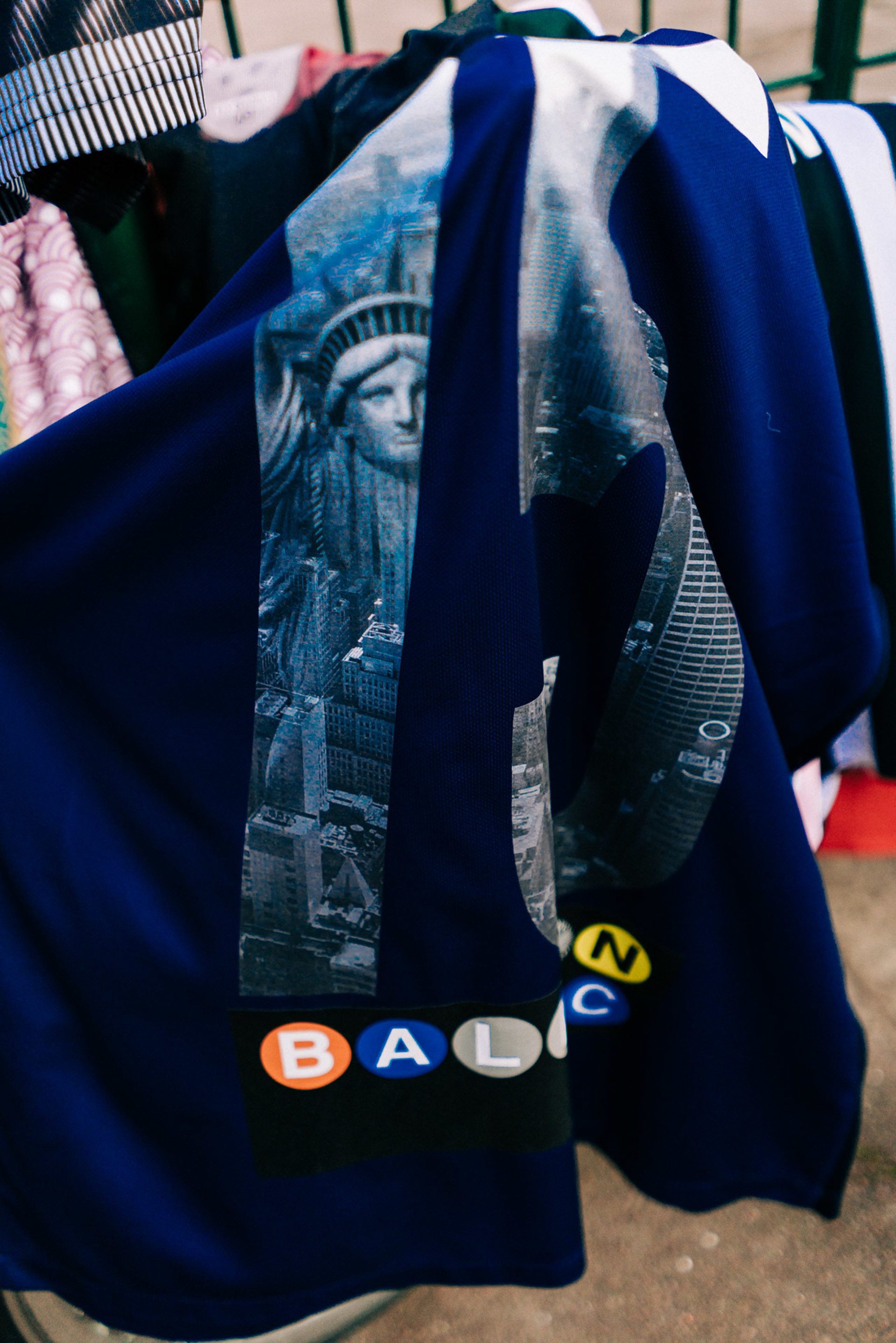

So having this mindset, and having the eyes and ears of the people in fashion and marketing that were coming into his bar, Jack set his sights on getting his patrons to enjoy the game a little bit more. But as it turns out, the more he tried to sway people to toward his philosophy of football, the more he realized that he didn’t have to, because they already felt the same way.
“Some of the lads, you’d have no idea that they were fans of the game, that they really enjoyed the game until you got them in the bar, and you got them hurling abuse at the TV, and you got them in a football shirt to support their team.”
It was like they were living double lives and they needed Jack to bring out that other side of them, to let them know that it was more uncool not to show their pride and passion than it was to express themselves and their true love.
“I don’t think we can single-handedly claim responsibility that the football shirt is a bit more prevalent these days and people are happier to show their true colors but [the bar] gave them a place which was like a halfway house. It wasn’t turning up to Millwall bar in London. We weren’t just going to plant the head of menswear from Dior into a Millwall supporter’s bar and be like ‘yeah, go on mate’ because that would be terrifying and he wouldn’t fit in. It was a slightly softer edge, it didn’t take itself too seriously and I think people picked up on that quite quickly. And once they were immersed in it they realized, ‘yeah, this is quite good fun!’”
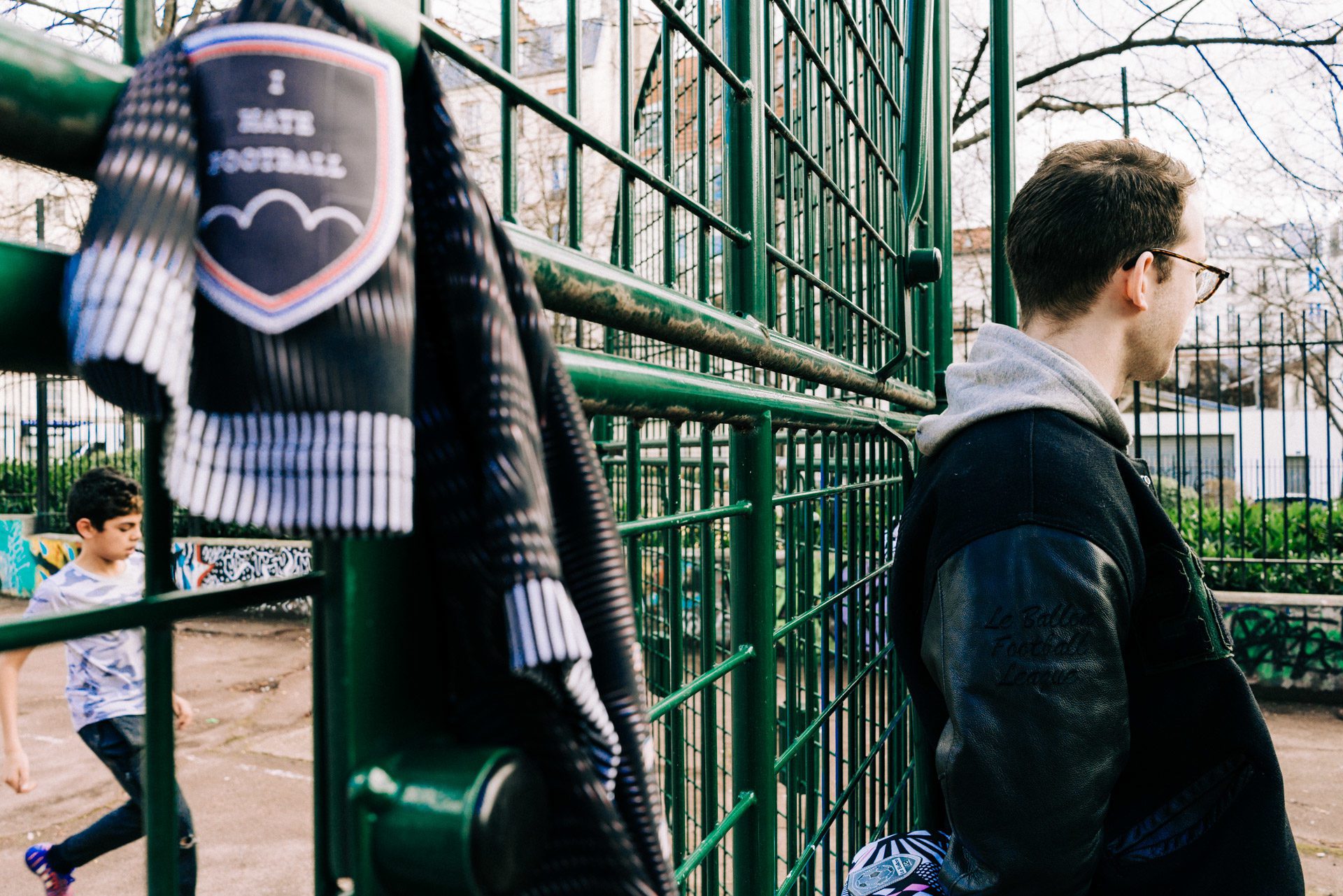
At the conclusion of the World Cup and the excitement and energy that they had built around his football bar, Jack looked on to the next step of Le Ballon. Upon getting a call from Nike, Jack thought to create a league composed of all the cool Parisian bars among and around his own as you can often find back at his home in England.
“We went and knocked on doors and were like, ’we’re thinking of starting a pub league, do you want in?’ and they’re like, ‘Why the hell would we want to do that?’’ So they would pitch to them as best they could. ”Playing football, you, your staff, a couple of your mates, your clients, your patrons, all get together, you know, Sunday morning, hung over football! And then back to one of the bars to watch the games.” But they were met with a resounding answer: “No. That sounds like a terrible idea.”
Ultimately, they had no desire to create a pub league so Jack had to go back to the drawing board to figure out what else he could do. “We decided that with the guys we had gotten to meet and knew already through the bar, could we get these guys to create a team, create a league, full of designers, models, photographers, artists, writers, PR people, ad men, and all that sort of thing. So we had the idea and we took it to Nike and they said, ‘Yeah! That seems like a really good idea.’”
“We got the okay from Nike at the end of October 2014 and we kicked off January 2015, so it was a pretty quick turnaround. We got everybody to the bar, in the basement, put together a little presentation saying this is what it’s going to be, this is who we are, this is who you need to find as well. They had to find their teammates. And right, they had a week; a week to come back with a roster, a logo, a kit. And sure enough, a week later they’ve put together their presentations. We told them all they had to come and present a proper presentation, and they all did. I had a quick look at the list of the players. Made sure that they were telling the right sort of story we wanted to tell and away we went.”

“We had guys who were on the books at professional clubs to people who had literally never played football before. And we were able to balance it out and everyone was just as keen as one another. Every week they came to training and the guys who had never played before were able to get markedly better.”
Rather than follow a traditional schedule of training and matches on a weekly basis, the teams would train weekly, but in a group setting. They wouldn’t train as individual teams but as one team, Le Ballon FC. Then at the end of the month, they would split into their respective teams and have their matches.
“I’ve grown up playing football all my life. I’ve played for good clubs. I played varsity soccer in Canada, playing six days a week, flying around the country to play football, so I was used to training at a high level and playing at a high level, so for me, to get back and play football again was really awesome. For the people who had played football when they were younger and then stopped, it was nice for them to be like, ‘Ah yeah, football training! I remember this from when I was ten. This is great!’ And then for the guys that had never done it before, they were like, ’God I missed out on this when I was a kid? This is great! I’m here with like a hundred mates. This is really good fun.’ And the guys who had never played went from not being able to kick a ball to actually being half decent footballers come the end it. That was quite good as well and it tied in with our narrative we had with Nike [regarding self-improvement].”

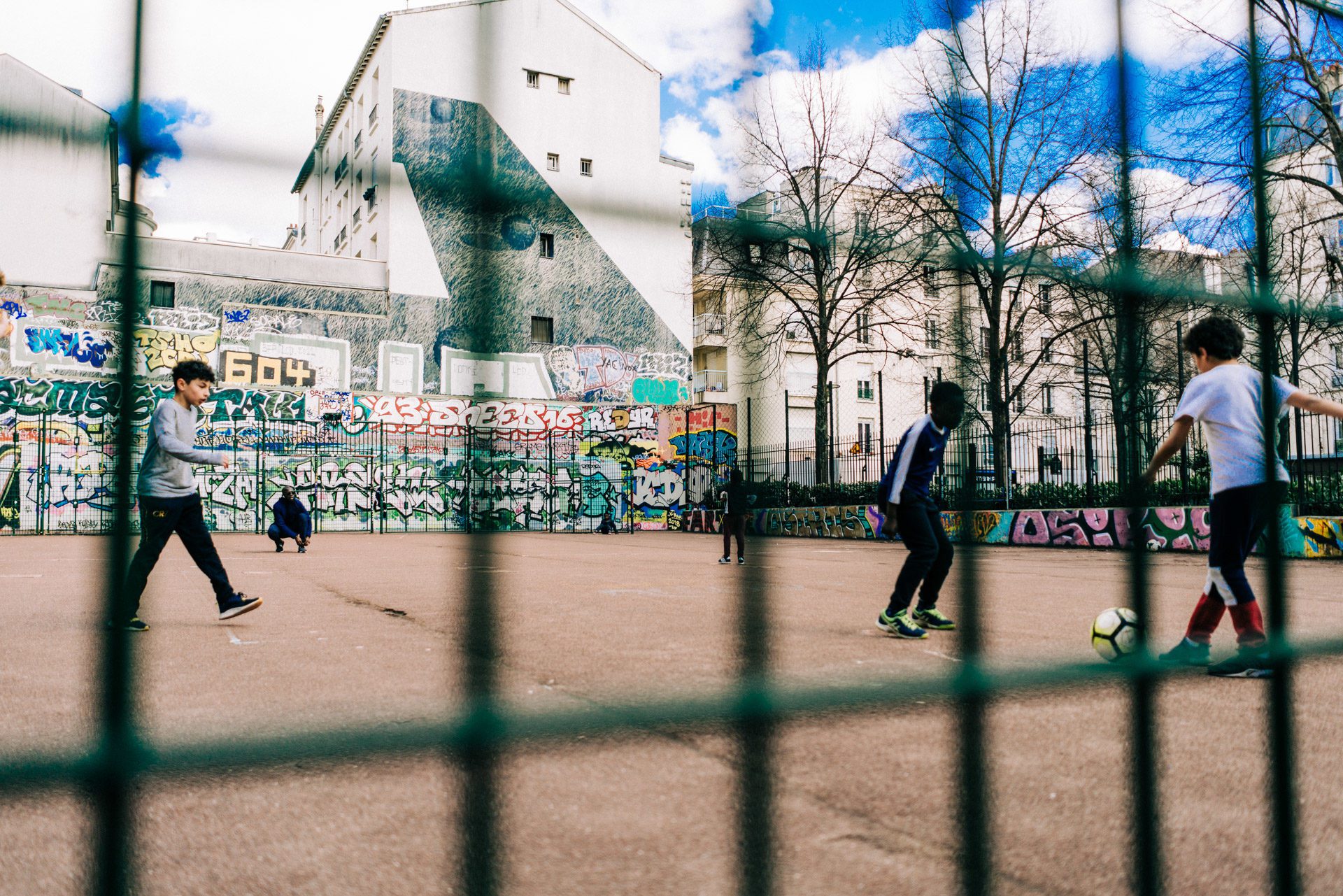
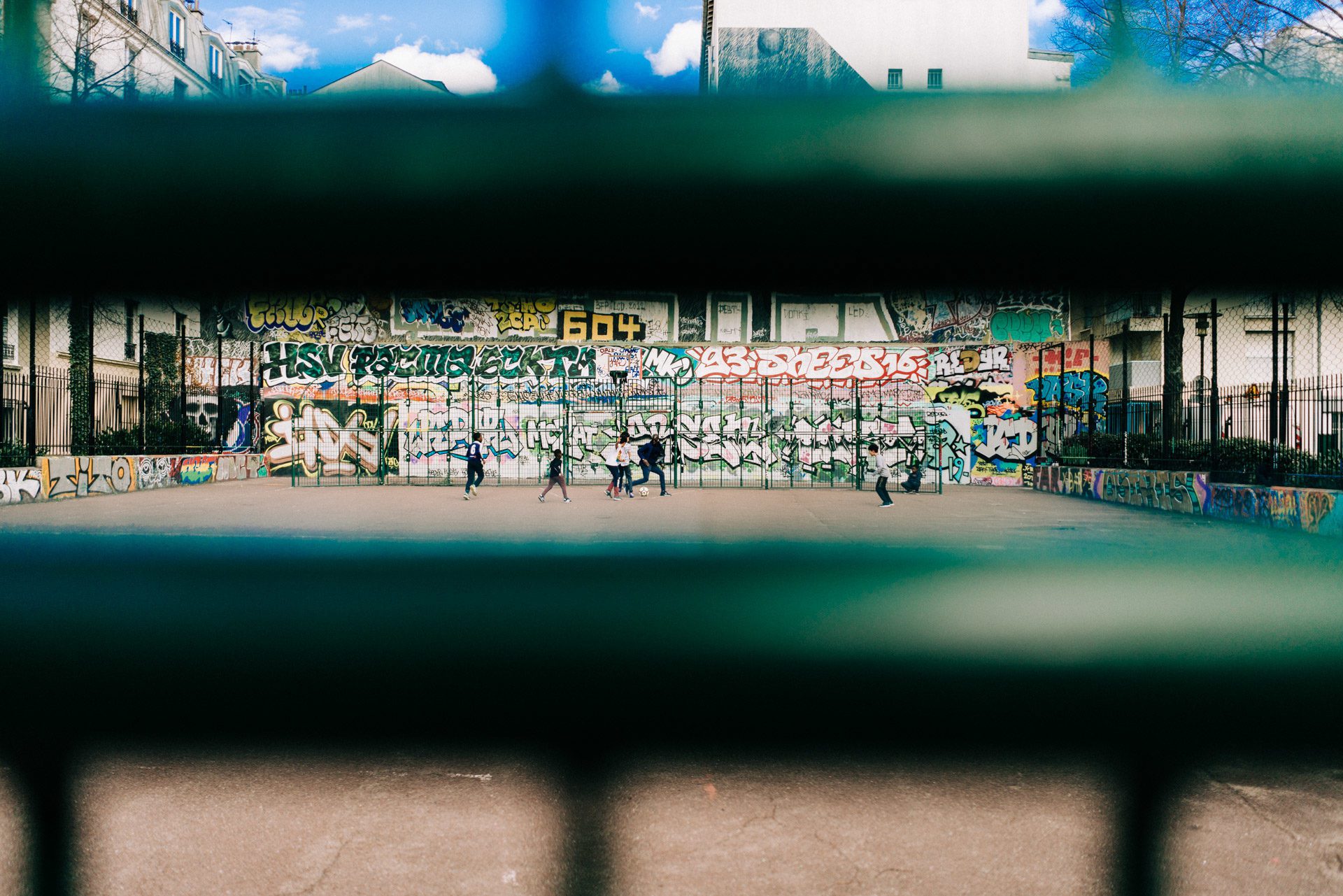
It didn’t take long for the rest of the world to learn about what Jack was doing with Le Ballon and his league of creatives. Jack was inundated with daily messages asking how to get on a team or how to create their own. Everyone wanted to be a part of it or try to do the same back in their corner of the world. Whether or not he’s ready to admit it, he had created a league unlike any other. “Were we the first? I dunno, maybe. And even if we weren’t, even now after us, there aren’t many out there.”
As the league continued to grow, so did the needs of Le Ballon. Additional sponsorships and partnerships were formed to keep the machine moving at a proper pace. “Puma came in and helped us out; they took over a couple of teams, so that was cool. Soccerbible got involved and really helped us tell the story. That helped us find a couple of sponsors as well, with them as a guaranteed media partner, their following is so enormous it provided added value.” Jack also built a relationship with Red Star FC who allowed them access to their training grounds and stadium for Le Ballon to play on.
“It was a bit more organic than it was in the first season where we had gone from zero to a hundred in a way that basically nobody else had ever done before. The third [season] was like returning to the source. I’d like to say that we were re-inventing it but it was more of scrapping around and making sure the thing didn’t die before we were ready. It was a bit of lateral thinking but it was a happy accident, I suppose.”
From there, Le Ballon then began touring as a team to different countries to play against other like-minded ensembles. “This is something that needs to be done; football is a global game. There are loads of people doing things that are similar to us, let’s try and [tour]. So we went to Milan to play against Calcetto Eleganza and AS Velasca which was awesome. Calcetto came here, Guerrilla [FC] came here. Soho Warriors came here. Recreativo Hackney came here. And yeah, getting fifteen guys together gave us an excuse to make new kits as well.”
All the teams traveling back and forth to each other lent great opportunities for content to be created and new stories to be told. “The guys coming from Milan to Paris or us going to Milan, everyone’s filming everything; everyone’s taking pictures of everything. You can look back at it and go, ’yeah, that was a really good time.’”
While Jack recounted the inception and progression of Le Ballon, he’d be remiss if he didn’t mention one of the best events he had ever put on.
“The best thing that we did was the art gallery for the Euros in 2016, because that was just genuinely silly. No one has done anything like that and I don’t think anyone will again. Brands wouldn’t really be able to do what we did. They would never take it on; they would never try it. It was setting fire to money!”
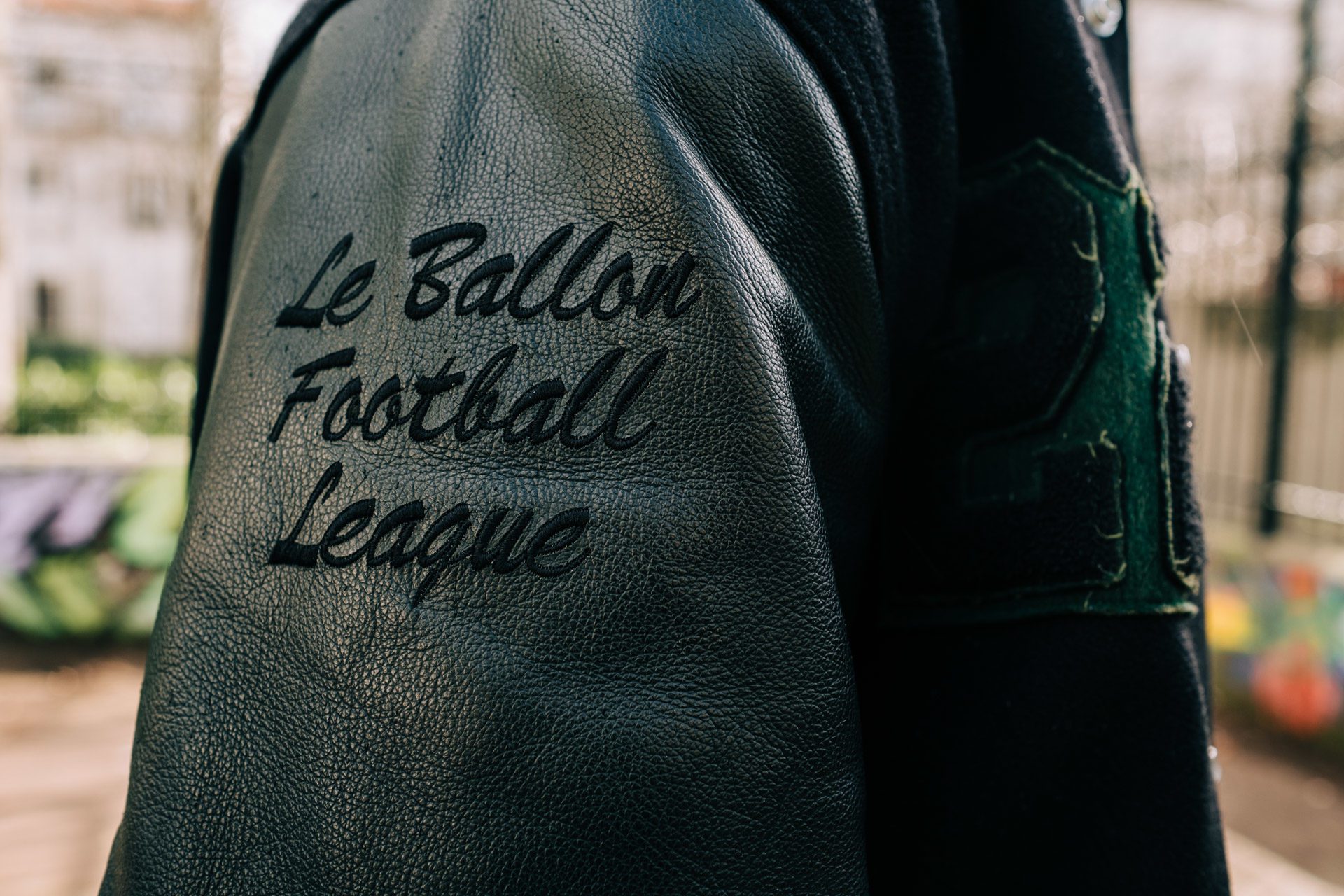
“We had the bar at the same time just around the corner so it’d be at the gallery at 8, until 8, close the gallery, go to the bar, close the bar at 2, and do it again thirty days in a row. We’d completely rung ourselves out. Customization in the basement was stupid!
We had far too much going on. [We had] like 200+ embellishments, 75 patches, 120 transfer customization elements, 8 different football shirts that were designed with four different designers. We had merchandise from all over the world. Stuff from Japan, Korea, Malaysia, the States, England, Italy, France, Brazil, Russia; it was really, really stupid!”
“We commissioned work from two dozen artists to be on the walls and on display, sculptures and paintings and photographs. We had a library which had every independent football magazine that I knew in the world. So that was good. The opening we had two or three hundred people standing in the road. That was a good time and I think that’s probably the thing that you’d say you’re most proud of. It was a stupid idea and we executed it somehow.”
As a pioneer of bringing football culture to the forefront, Jack has had a unique opportunity to see it evolve and expand on the global stage.
“Football culture is way bigger now; it’s massive now. I joke about my cynicism but it is something that I get. Even the word ‘culture,’ I feel it’s… I dunno, you end up sounding a bit like a hipster. ‘I listened to Arcade Fire before they were cool’ that sort of thing. But I see the way culture gets bandied about and I think people often miss the mark.”
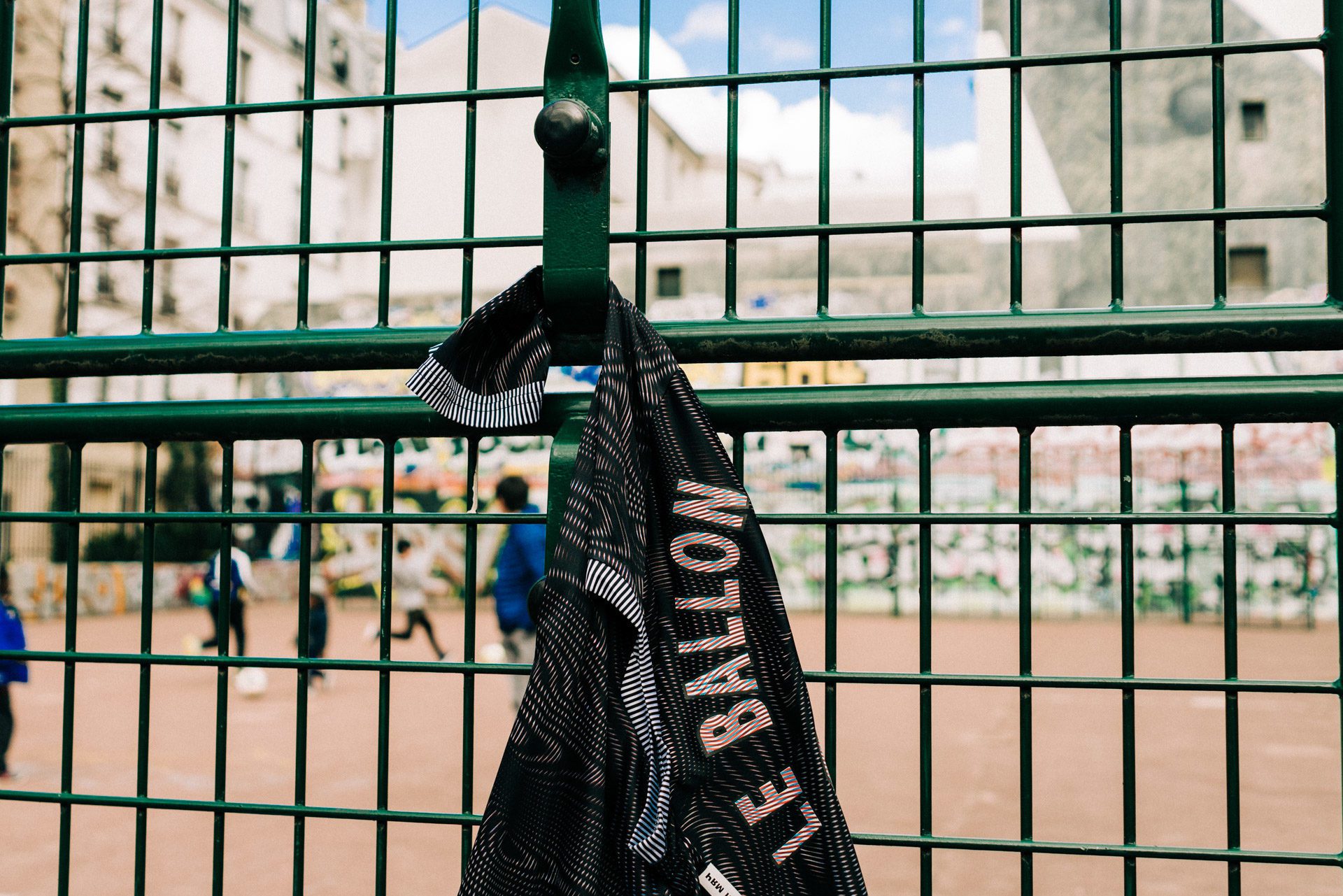

“But at the same time, the more people that are involved in it (my cynicism aside), the better. There’s more scope for creativity and people that are coming forth later have new ideas. When we started doing what we were doing, there wasn’t much of it going on and we had a different way of looking at it to the people that had gone on before us. That was fine. And now people that are coming in have a different way of looking at it than what we do and I suppose there always has to be a changing of the guard; there has to be progression. If it was up to me, we’d all just be going around in football shirts from the early 90’s. Unfortunately, that’s not the case.”
“I really like the fact that the women’s side of it has taken off; that’s really cool. We’ve got our friends here, the Cacahuète Sluts who are awesome. They continue to do really awesome things. They make cool videos, they take good photos. They have a really good story to tell and they have a really good message as well. Then in England you’ve got the likes of Romance FC, who again, are really cool.”
“In terms of the biggest change, [football culture] has shifted. Social media has played a big role as well. People can get something started [quickly] and it has shrunk the world. Everyone can see everything.”
So what’s in store for Jack and the future of Le Ballon? “I want to keep the touring alive because I think it’s genuinely the most fun you can have. I’d love to keep that going because you get to learn the way the others do it and all the creativity that goes into it. When you do these things, they’re inspired to make a new kit because ‘Le Ballon is going to come and play against us’ because it’s fresh and an injection of impetus and life into their story. Things get done when you act as a group and when you travel and meet new people.”
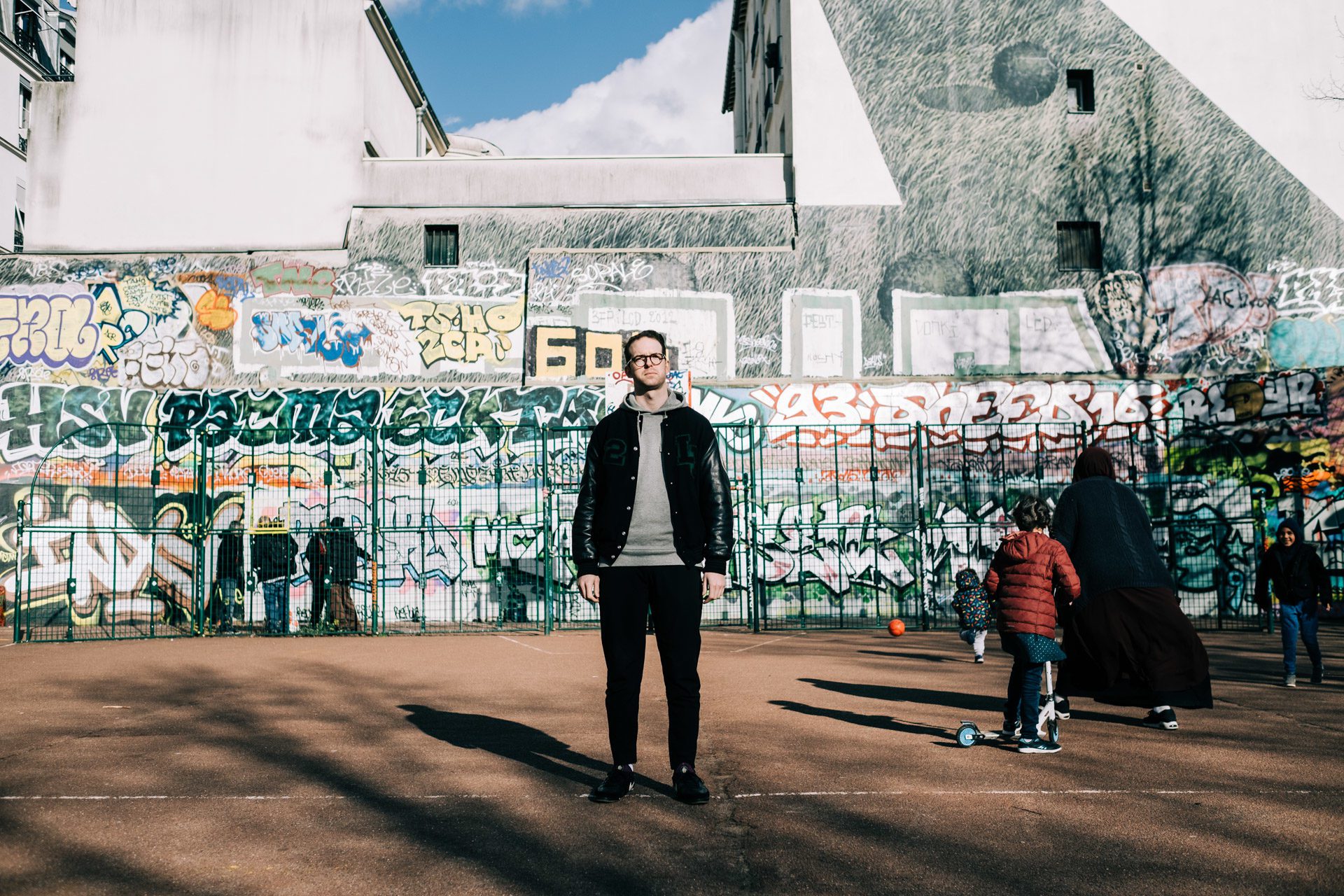
“The league has been on hiatus for almost a year now and I want to get it going again but it costs a lot of money. So I need to make sure I find the right partners, the right sponsors to help us out with that. I want to take [the league] around the world because I think that’s interesting. I’d love to go to Tokyo and see what they would be able to come up with if you were to go, ‘this is a limitless, no holds barred creative opportunity, release your inner ten year old.’”
“I think it’s about story-telling, it’s about design, it’s about the joy of the game and everything else that’s inspired by the game. We’ve done Paris and we’ve seen how they do it. I think it could happen again here with the younger crew and see how the new generation of cool kids in Paris would interpret it but for me, I kind of want to see how somewhere else in the world would do it. How would Brazil interpret the Le Ballon Football League? What would they make? How would they do it? I think it would be great fun! Now I just have to convince someone with a checkbook to think the same way.”
As for any final advice Jack might have, he had this to say: “Do it because you like it and don’t try to turn it into a business. I see a lot of people try and monetize it. 99 times out of 100 it’s just not worth it. You’ll end up destroying the thing that you love because you’ll wonder why other people aren’t as passionate about it as you are. Everybody wants to be a brand these days and it’s not worth it. Do it because you like it.”

